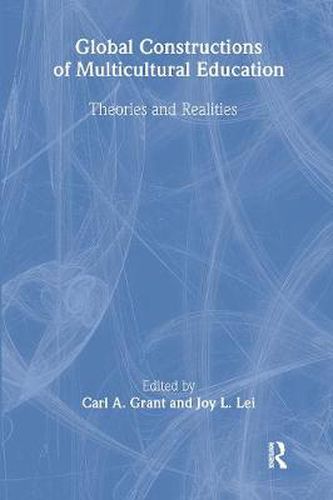Readings Newsletter
Become a Readings Member to make your shopping experience even easier.
Sign in or sign up for free!
You’re not far away from qualifying for FREE standard shipping within Australia
You’ve qualified for FREE standard shipping within Australia
The cart is loading…






This book tells us how various global regions are dealing with three major concerns within the field of multicultural education:
*the conceptualization and realization of difference and diversity ;
*the inclusion and exclusion of social groups within a definition of multicultural education; and
*the effects of power on relations between and among groups identified under the multicultural education umbrella.
All of the chapter authors pay attention to these themes, but, at the same time, they bring their particular interests and perspectives to the book, addressing issues, such as linguistic, racial, ethnic, and religious diversity; class; educational inequalities; teacher education; conceptualizations of citizenship; and questions of identity construction. In addition, the authors offer both historical and social contexts for their analytical discussion of the ideals and practices of multicultural education in a particular region.
This is not a book that tells us about multicultural education with an international twist ; it provides readers with different ways to think, talk, and do research about issues of diversity,
difference, and the effects of power as they relate to education.
$9.00 standard shipping within Australia
FREE standard shipping within Australia for orders over $100.00
Express & International shipping calculated at checkout
Stock availability can be subject to change without notice. We recommend calling the shop or contacting our online team to check availability of low stock items. Please see our Shopping Online page for more details.
This book tells us how various global regions are dealing with three major concerns within the field of multicultural education:
*the conceptualization and realization of difference and diversity ;
*the inclusion and exclusion of social groups within a definition of multicultural education; and
*the effects of power on relations between and among groups identified under the multicultural education umbrella.
All of the chapter authors pay attention to these themes, but, at the same time, they bring their particular interests and perspectives to the book, addressing issues, such as linguistic, racial, ethnic, and religious diversity; class; educational inequalities; teacher education; conceptualizations of citizenship; and questions of identity construction. In addition, the authors offer both historical and social contexts for their analytical discussion of the ideals and practices of multicultural education in a particular region.
This is not a book that tells us about multicultural education with an international twist ; it provides readers with different ways to think, talk, and do research about issues of diversity,
difference, and the effects of power as they relate to education.